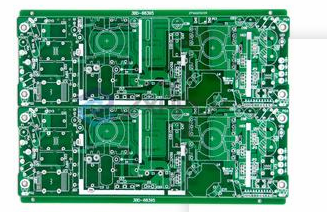Understand the comparison between rigid PCB and flexible PCB, when it is better to use one type over another, and understand some of the manufacturing steps related to these PCB types.
A Printed circuit boards are not always "circuit boards"
When using the term "PCB", many people think of rigid PCBs (printed circuit boards). However, the term PCB can refer to a rigid PCB or a flexible PCB. Flexible PCBs are often called flexible circuits, but they are also known by other names, including flexible boards, flexible circuit boards, flexible printed circuit boards, and more formal flexible electronic devices. Flexible circuits have gained tremendous popularity recently because they can be shaped, bent, twisted, and folded into infinite configurations. However, in the end, rigid PCB and flexible PCB play the same ultimate function in the most basic sense, that is, connecting various electrical and mechanical components together.
When to use rigidity and when to use flexibility
The cost of a rigid PCB is generally lower than that of a flexible circuit. I say "usually" because when considering the total cost of ownership, some applications using flexible PCBs may be cheaper than rigid PCBs. To truly understand the total cost of ownership, the first thing you need to understand is that flexible circuits can eliminate the need for connectors, wiring harnesses, and other circuit boards. By removing these components from the design, material costs, labor and assembly costs, and waste costs are all reduced.

Many electronic devices (laptops and desktop computers, audio keyboards, solid state drives (SSD), flat-screen TVs and monitors, children's toys and various electronic devices) use rigid PCBs instead of flexible PCBs. However, flexible circuits can be found in ultra-compact and/or high-performance devices, including GPS units, tablets, smart phones, cameras, and wearable devices.
More complex is not the only reason to use flex circuits; low-tech applications may use flex circuit technology, which in some cases will make installation easier.
Finally, if necessary, flexible circuits and rigid circuits can be used together as a unified PCB. Perhaps this method can provide the best of both worlds.
Some similarities and differences between rigid PCB and flexible circuit
When designing a rigid PCB, certain design rules must be followed, including minimum hole size, minimum space and trace width, minimum distance to the edge of the board, copper and overall design thickness. In addition, many manufacturing process steps are shared between rigid and flexible PCBs. These process steps include drilling and plating of holes and through holes, optical imaging and development, etching of copper traces, pads, contours and planes, and heating (baking) of the circuit board to remove moisture in the PCB. . At this point in the manufacturing process, the rigid PCB leads to the solder mask, while the flexible circuit enters the overlay.
Flexible circuit coverage
Flex For example, a circuit cover layer or cover layer is a lamination process used to encapsulate and protect the external circuit of a flexible circuit. The cover film of the flexible circuit is similar to the solder mask of the rigid PCB, with one big difference...the cover film is very flexible! According to allflexinc.com, "The cover film is usually a polyimide film coated with a thermosetting adhesive. The film thickness ranges from .0005" to .005", with the most common being .001" and .002".
The polyimide and adhesive overlays are laminated using pressure and heat, where the heat helps the adhesive to flow easily and fill the gaps between any traces and pads; this prevents air entrainment between the layers. From allflexinc.com again: "Adhesive flow is necessary because it helps ensure complete surface contact and encapsulation. The adhesive will tend to ooze slightly around the opening shown in the image below. This oozing is usually Called "adhesive extrusion", it is actually an ideal phenomenon.
After the overlay lamination process is completed, use drilling, wiring, or laser cutting to make any component and/or feature openings. Etching cannot be used.
IPC standards for rigid and flexible PCBs
The following list of IPC standards applies to rigid PCBs and flexible circuits. Please note that this list is not exhaustive and other IPC standards may need to be considered.
IPC-2221A, General Standard for Printed Circuit Board Design
IPC-2223, Standard for Flexible Printed Circuit Boards for Partition Design
IPC-4101, Specification for Base Materials for Rigid and Multilayer Printed Circuit Boards
IPC-4202, Flexible base dielectric for flexible printed circuits
IPC-4203, adhesive coating dielectric film, used as cover for flexible printed circuit and flexible adhesive bonding film
IPC-4204, flexible metal-clad dielectric, used to manufacture flexible printed circuits
IPC-6013, Qualification and Performance Specification for Flexible Printed Circuits
in conclusion
Although both rigid and flexible printed circuit boards play a fundamental role-connecting various electrical and mechanical components together-these two technologies have a place in life. Although many of the same design rules are used with rigid and flexible PCBs, flexible PCBs require some additional rules due to their additional manufacturing process steps. Although rigid PCBs seem to be less costly (at least in the initial stages), the total cost of ownership of the design should be considered before declaring that flexible circuits are too expensive.
Finally, it is important to be careful not to be able to manufacture flexible PCBs in all board houses. Before starting flexible circuit design, you should interview multiple boards and discuss flexible PCB construction options and related costs.